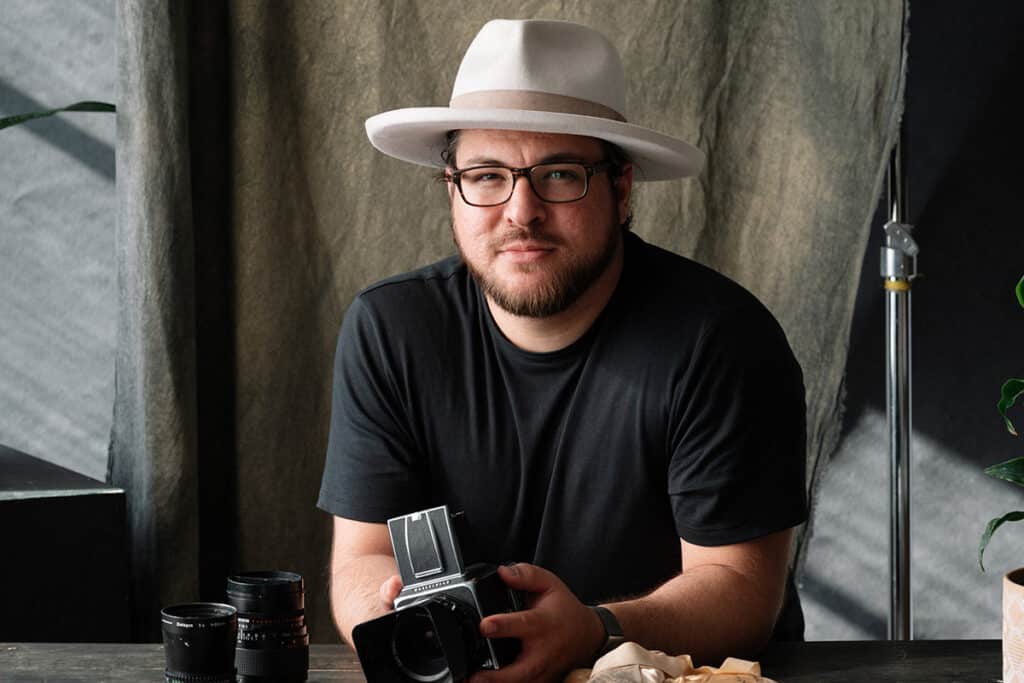CYNTHIA RODRIGUEZ
Age: 32
Occupation: Teaching assistant, Culinary Institute of America (CIA), San Antonio.
Personal: Shares her life with daughter, Carissa, age 12, and their Chihuahua, Carmelo.
Why she’s a Role Model: After more than a decade of ups and downs in the food industry, she tightened an already tough schedule to go back to school at the Culinary Institute of America’s then brand-new San Antonio campus, where her work was recognized with a job offer before graduation.
Goals: Finish school at the Culinary Institute in Hyde Park, N.Y., travel, write a cookbook inspired by international street food, “live green, eat locally and always improve at my craft.”
Best advice ever given: From CIA/SA education director Shelley Grieshaber: “Stay strong, keep it real, keep it simple.”
Her own Role Models: Her mother, Adela Rodriguez, “who instilled me with a love of food and cooking,” and mentor Grieshaber, “who gave me the support and confidence to grow and continue in this industry.”
Believes: “In this life, we’re all students, every day. You don’t ever have to stop learning.”
Kitchen essentials: A set of professional-quality knives and a good cutting board, kosher salt and freshly ground pepper, copies of Larousse Gastronomique and On Food and Cooking, by Harold McGee.
If Cynthia Rodriguez had gotten her way in high school, she’d be going to work dressed in the latest fashions instead of cook’s whites.
Now a teaching assistant at the Culinary Institute of America (CIA), San Antonio, she got her first job through a co-operative program at John Jay High School. “I wanted a job in a clothing store, but I didn’t get one,” she says. The teacher in charge of the program persuaded her to get some experience in another kind of job — working at a Bill Miller’s barbecue restaurant. There, Rodriguez started out chopping cabbage to make coleslaw and worked her way up to cooking on the line, surprising herself in the process. Cooking, she found, was fun, and she stayed in the job for two years. She also worked in a candy store on the River Walk, dipping strawberries in chocolate. Growing up, Rodriguez had enjoyed her mother’s Tex-Mex specialties and could just about scramble an egg by herself. Drive-through burgers were OK, too, especially the ones from Whataburger. Once she started working in professional kitchens, though, she was hooked on cooking. “It’s such an important thing to do,” she says, during an interview in the library of the school, housed in the renovated Pearl Brewery complex.
“People have to eat. If you can make food people love and expand what they know and like about food, you’re doing them a great service,” she says. For years, Rodriguez went from job to job, honing her skills and getting a taste for more — that is, more responsibility. “I wanted more freedom to explore what I wanted to do within the food industry,” she says. So in 2002, she accepted an offer to manage Johnny Ringo’s, a West Avenue restaurant then owned by her brother Raul and another investor. The restaurant’s signature dish was a beanburger similar to the ones served at the late-lamented Sill’s Snack Shack on Austin Highway. At Ringo’s, the Rodriguez siblings spiced up the recipe with scratch-cooked refried beans and premium buns. Meanwhile, Cynthia was ordering food, supervising production of burgers and more for as many as a hundred customers daily, pitching in wherever needed with the restaurant’s staff of five. “It was the right spot, the right time, and I had the greatest people with me,” says Rodriguez. Unfortunately, the partners decided to close the restaurant when her brother, a Marine reservist, was called up; after 18 months in business, this version of Johnny Ringo’s closed, though the investors retained the name and recipes.
For her subsequent course in on-the-job training, Rodriguez kicked it up a notch, manning a busy mixed-grill station among other duties as a line cook at The Club at Sonterra. “Sometimes the staff would prepare fabulous and extravagant dishes,” she says, “It gave me an idea of what fine-dining restaurants would prepare.”
Even more transformative was her next job, a stint as a production cook at Central Market. There, Rodriguez remembers, “You were surrounded by all this fresh food, all these different ingredients and styles of cooking. It really opened my eyes to what cooking could mean.” At the same time, she was watching lots of Food Network shows and experimenting at home, “cooking with just a few good ingredients, becoming more conscious of what I put into my body” and thinking about her next move on the food chain. By this time, Rodriguez knew about the Culinary Institute of America (CIA), whose main campus is in Hyde Park, N.Y., and wanted to apply, but decided to postpone it for a few years. Her daughter, Carissa, was still young, and Rodriguez worked irregular hours, making them dependent on family help with child care. Then she read in the San Antonio Express-News about the CIA’s plans to open a new campus in San Antonio – one of only three branches, including others in New York City and California’s Napa Valley. “I couldn’t believe it,” Rodriguez says with a smile. “They were bringing the CIA to me. I just didn’t know if I could get in.” With the encouragement of Shelley Grieshaber, who had managed Central Market’s cooking school and would go on to be director of education at CIA/SA, Rodriguez applied and was accepted into the new school’s first class. She enrolled in the 30-week certificate program, moving through studies (called blocks) such as Gastronomy and Product Knowledge, Food Safety, Breakfast and Lunch Cookery, Cuisines of Europe and the Mediterranean and Cuisines of the Americas.
It wasn’t easy. To make it all work, Rodriguez got up at 5 a.m. to get her daughter ready for school, then set off for her own day of classes, which began at 7 a.m. and ended at 1:30 p.m. From there, she went to work at Central Market, usually from 2 p.m. to 9 p.m. That schedule didn’t leave much breathing room, but it was worth it. While Rodriguez had been making her living in kitchens for more than a decade, she soon realized she had a lot to learn. In one of her first classes, the instructor asked each student to bring in the names of two dishes they had never tasted but would like to try. “I picked lamb chops and sea urchin,” says Rodriguez. “Lamb chops sounded like such an elegant protein to me. Nobody in my family ever made them. And I couldn’t even imagine what sea urchin would taste like.” A few days later, the instructor brought in samples of each of the students’ requests, including the lamb chops and sea urchin. Rodriguez liked the former and has since learned how to prepare lamb chops; one taste of sea urchin was enough, but “The class just showed me how much was out there that I didn’t know about.” About two-thirds of the way through the certificate program, Rodriguez was offered the job she has now. As a teaching assistant, she’s responsible for working with evening students, helping instructors with lesson planning and meal production and testing CIA recipes in development. Having taken a leave of absence from Central Market, she is down to one job and enjoys spending more time with Carissa, now 12 and a student at a college-preparatory charter middle school.
At home, Rodriguez cooks “normal comfort foods” such as meatloaf or pasta and sauce, she says, “but with my own special twists.” Carissa also is getting interested in cooking, her mother reports proudly: “We’re working on her knife skills now.” Sometimes, though, kitchen time is just mother-daughter time, where they can talk or watch a little television together while Rodriguez bakes or makes dinner, offering her daughter “little tastes of the ingredients I’m using.” When Carissa is a little older, Rodriguez hopes to go back to school, possibly to earn a college degree with a major in education and minor in nutrition, or to the CIA main campus in New York for more advanced culinary training. For now, she’s happy where she is, helping smooth the way for CIA/SA students and instructors while getting to know more about the flavors of her favorite cuisines — currently Latin-American, Greek, Indian and Italian.
What about Whataburger? “I still have one once in a while,” Rodriguez says, smiling. “Sometimes I get a craving.”
White Fish Ceviche
Developed by Cynthia Rodriguez
Serves 4-6
Ingredients:
2 pounds white fish, such as flounder, snapper or sole, diced in 1/4-inch pieces
1 cup fresh lime juice
1 teaspoon olive oil
1 teaspoon salt
Sugar to taste (1 pinch at a time)
1 clove garlic, finely chopped
1 yellow bell pepper, finely diced
1 medium red onion, finely diced (Soak in water for at least two hours before adding to the dish, to prevent an overly strong onion flavor.)
1 tablespoon cilantro, finely chopped
1 tablespoon parsley, finely chopped
1 large avocado, diced in 1/4-inch pieces (Soak in lime juice to prevent discoloration.)
Cut fish and place into service bowl and set aside. In a medium bowl, combine lime juice, oil, sugar, salt and garlic. Pour this mixture over the fish at least two hours before serving. Add yellow bell pepper, red onion, cilantro, parsley and avocado to the fish mixture. Serve with your favorite Mexican beer and tortilla chips.




